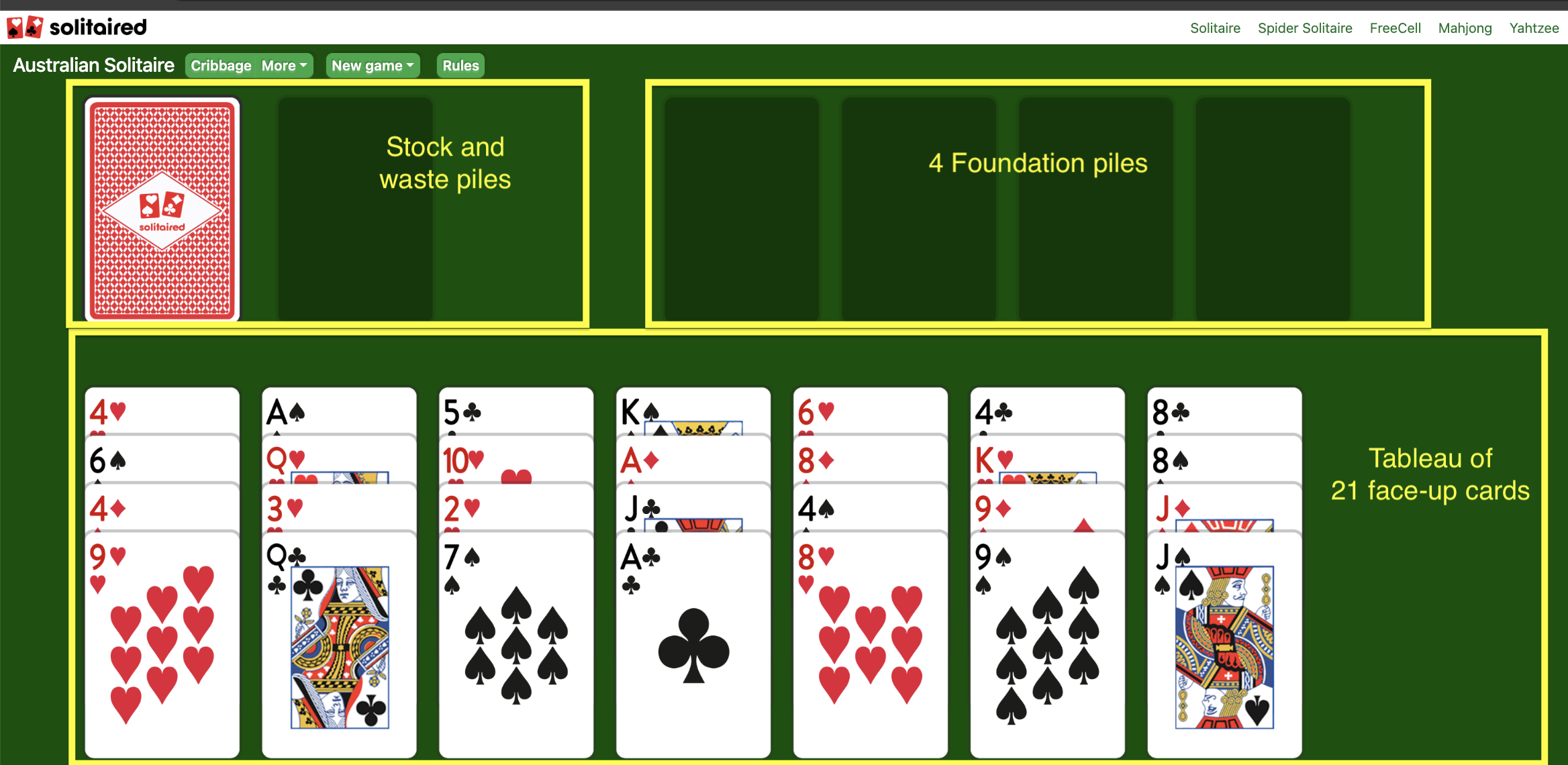Play Australian Patience Solitaire Online for Free
Play unlimited games of Australian Solitaire. Undo moves to help you win the game.
What is Australian Solitaire?
Australian solitaire, or Australian Patience solitaire, is a fun and challenging variation of classic Yukon solitaire.
How to Play
Objective
Your goal is to move all cards to the foundation by suit from Ace to King in ascending order.
The Setup and Play Area
Foundation piles: These are the four empty piles at the top right, where you’ll order cards from Ace to King by suit.
Tableau piles: This is the area with 7 columns, each with 4 cards face-up, totaling 21 cards.
Stock pile: The rest of the cards, or 31 cards, go into the stock pile.
Waste pile: Cards are moved one at a time from the stock pile to the waste pile. The top card of the waste pile can be moved to either the foundation or the tableau if it is a legal move.

Available moves
- Remove cards from the tableau by matching cards that add up to 13. These are the possible pairs:
- Sequence cards in the tableau in descending order by suit. You can move a card and cards underneath it on top of a card as long as it’s one rank lower and of the same suit. A 4 of Clubs, for example, can be placed on a 5 of Clubs.
- Similar to Yukon, you can move groups of cards even if they aren’t sequenced, as long as the top card of that group is one rank lower and of the same suit as the card you are placing it on top of. For example, a 5 of Hearts followed by a King of Diamonds can be moved on top of a 6 of Hearts.
- Only Kings can move into empty tableau spaces.
- You can only pass through the stock pile once. There’s no redeal in Australian Patience.
- When all cards have been moved to the foundation, you win!
Strategy
- Plan ahead and take your time. Because all the cards in the tableau are face-up, look carefully at every card before making moves, not just the top cards.
- Move aces to the foundations as soon as they’re available.
- Check for deadlocks at the beginning. A game of Australian solitaire can be unwinnable if there’s a deadlock in the tableau. For instance, if a pile contains Spades in the sequence 5-3-4, you can never move the 4. The game would be an automatic loss and not worth your time to play. While this is a rare occurrence, it’s worth checking.
- Try to empty the tableau columns quickly. This allows you to move Kings to these empty columns and free up cards to help you sequence.
Frequently Asked Questions
What is the difference between Patience and Solitaire?
Patience is another name for Solitaire. It’s called Patience because you need to take your time to win games.
What are the odds of winning?
When looking at 8,595 random games played, 1,881 were won, making the win rate 21.88%.
What are similar games to try?
Outback is also the the same game but with 2 decks of cards. Alaska and Russian Solitaire are both Yukon-style games where you can move cards as a group as long as the top card of the game is properly sequenced.
What are other popular Solitaire games?
Be sure to check out these solitaire games:
 We’d really love your support! - Get an an ad-free experience
We’d really love your support! - Get an an ad-free experience